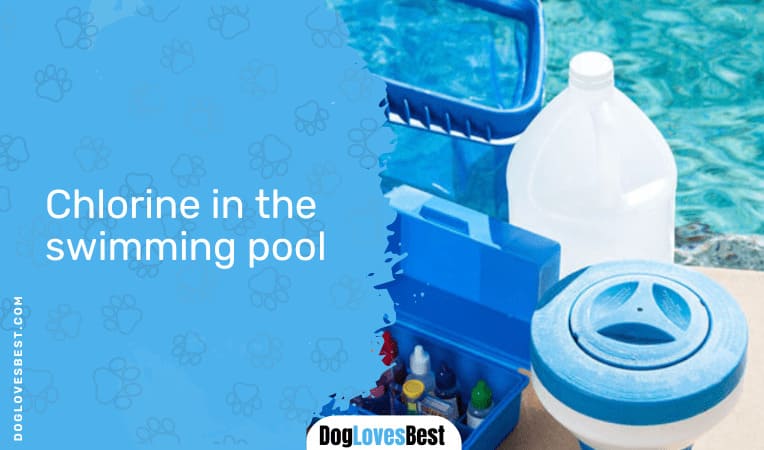Just like humans, dogs need mental stimulation in the form of play, fun, and varied activities that differ from the norm to help them stay sharp and happy.
Swimming also works wonders for overall health, delivering an aerobic workout that also tones and strengthens muscles.

Since swimming is of low impact, it can be particularly beneficial as a therapy for dogs rehabilitating from injury or surgery, having joint problems, or being older or overweight.
Before you go out swimming with your dog, you need to know everything about dogs and swimming and get answers to the most frequently asked questions. So that’s what is our main aim in this article.
Which Dog Breeds Are Best Suited to Swimming?
Many species are often more suited for swimming. Such dogs have in their blood centuries of ancestors bred to retrieve from water. Here are a few breeds of dogs who are best suited to swimming.

- Labrador Retriever – Lab Retrievers can even swim in frozen conditions.
- Chesapeake Bay Retriever – wavy hair makes them great swimming dogs.
- Newfoundland – As a drafting dog, they are big and solid, making them an ideal choice.
- Portuguese Water Dog – Anglers in Portugal used the dog to recover lost and broken a tackle to herd fish into their nets.
- Lagotto Romagnolo – Also called the Lake Dog of Romagnolo, as they are used for hunting ducks.
- Poodle – Poodles make good swimmers as they have been mostly trained to rescue dogs from water.
Which Dog Breeds Are Not Suited to Swimming?
Most dog breeds are inherently unable to enjoy being in the water. It’s sometimes because the physical structure is like that. Here are some breeds of dogs that should not be forced to swim.

- Pug: Even a thought swimming scares them. The reason is that they have a flatter face and move their noses more than other dogs. This disorder may bring to some breathing problems, commonly knowns as brachycephalic or airway obstructive syndrome.
- Shih Tzu: Shih Tzu may not like water because once their fur gets wet, it may take days for them to get dried because they have a lot of furs.
- Pekingese: Pekingese are lovely little dogs who loathe water. Do not take them for a swim because this breed is too dignified for water.
How Often You Can Take Your Dog For Swimming?
You can start swimming the dog once a week if they’re not used to it. As they build up their endurance, you can swim three or four days a week with your dog.
When your dog becomes a professional swimmer, you can take them swimming every day with you. However, you should never, force your dog to swim. You need to take special care when pups are swimming underwater.
Swimming time varies from dog to dog. In the very first sessions, the swimming time will be shorter. In consecutive visits, practice will build your dog’s confidence and encourage him to spend more time in the water.

During the initial period, the average dog will swim only for 5 to 10 minutes.
It is important to encourage your dog to relax and catch their breath at intervals during your swimming time. Many dogs new to the sport will swim just 10 minutes before they hit their stamina level.
Smooth and slow exercise is the secret to dogs recovering from injury or disease. Each visit is going to increase its strength.
For the average dog, the 30-minute swimming session is an industry-standard. Do get life vests for your pooch to ensure their safety when they are learning to swim.
Health Benefits of Swimming for a Dog
There are many advantages to playing in the water. Swimming is for your dog a fun, all-round practice.
It offers everything from exercise to relaxation, and there is a welcome release for all the energy dogs. Here are some advantages mentioned.
Overall Health
Swimming is one of your dog’s easiest, most complete forms of exercise. Four minutes of running is just one minute of swimming!
This provides numerous health benefits, including strengthening the heart and lungs, reducing inflammation, increasing metabolism, and enhancing circulation that helps maintain healthy skin and hair.
Maintain Bone Health
Swimming helps dogs move differently than they would usually be on solid ground, which increases their motion range.
All of these benefits make swimming a particularly beneficial form of exercise for dogs with joint problems such as arthritis or dysplasia, and an excellent remedy for pups recovering from orthopedic or neurological injury.
Stress-Relieving
Not only is swimming perfect for the physical health of your dog, but it also increases its emotional well-being. Swimming allows dogs to get all their pent-up energy out without feeling trapped on a leash.

A comfortably worn-out dog is more likely to look forward to going home and resting, allowing them to take advantage of good sleep restorative benefits.
Cooling Down
Dogs can have a hard time staying calm in the intense summer heat, as they don’t sweat the same way humans do.
They cool off through their feet’ pads and panting, sucking in air. It’s important to keep your dog hydrated, but you can help them cool down with water play as well.
Even just little kiddie dog pools help, a good swim will help keep your dog’s body temperature at a comfortable level. As we do, dogs can enjoy a relaxing swim.
Great for Overweight Dogs
In the case of overweight dogs, supplying them with sufficient exercise on the ground without overworking or without stressing their joints and muscles can be challenging.
With the water carrying most of the weight of the dog, swimming is a perfect way to burn calories and increase their metabolic rate without the risk of injury for overweight pups.
Remove Restlessness
Even dogs can get bored and restless. A wide range of activities helps keep your dog alert, concentrated and happy.
Play and exercise help to calm their minds and helps to improve their behaviors Take advantage of the times when you are able to bring your dog to the water and calm them.
Disadvantages of Swimming for a Dog
Although swimming sounds fun, if you haven’t taken proper care before or after swimming you may face several problems with swimming with your dog, there are some of the most reported drawbacks.
Chlorine in the swimming pool
A few hours in the chlorinated swimming pool won’t cause your dog any permanent harm, but it will irritate his nose and eyes.

After, swimming washes your dog thoroughly to prevent their skin and hair from being dried out by the chemical and then wipe him well. You can also put leave-in conditioner to prevent the chemical from stripping their fur of its natural oils.
Drinking too much water
While stopping your dog from drinking too much water while swimming seems to be impossible, you may be able to take preventive measures in case they get ill.

Do check our post to stop your dog from drinking pool water so that you can avoid water intoxication in dogs.
The pool water contains chemicals that are needed to sanitize and drinking too much of it will make your dog feel upset. If your dog gets sick, the chemical content in the water should be minimized by adding a mineral purifier
Getting an ear infection
Swimming in the water puts your dog at risk of contracting an ear infection. Even if you clean and maintain your swimming pool, it can still have germs and bacteria. With dogs having a sensitive ear canal, it can result in an ear infection.
You can minimize the risk of an ear infection by cleaning and drying your dog’s ears after swimming or cleaning out their ears using deodorizing ear wipes.
Conclusion
Swimming is an all-around healthy activity for your dog. It is not only for amusement but also helpful for Plenty of benefits, from cooling off on a hot summer day to staying in shape.
Whether you want to keep your working dog in shape, ease your pup’s arthritic pain, or get him back on his feet after surgery, getting your dog in the water may be just the thing he needs.
Share your views with the team of DogLovesBest.
References
- Teach Your Dog to Swim – VCA Hospitals
- Dogs and Water Safety – WebMD
- What’s a Good Excercise Plan For My Pet? – Tufts University

Peter Thielen has studied veterinary medicine and is a veterinary advisor at DogLovesBest. All the articles on this website that has to do something with the dog’s health go under his scrutiny before getting published. He also writes some of the featured articles on dog foods, treats, or other products, along with tips and tricks for canines for healthy living.
